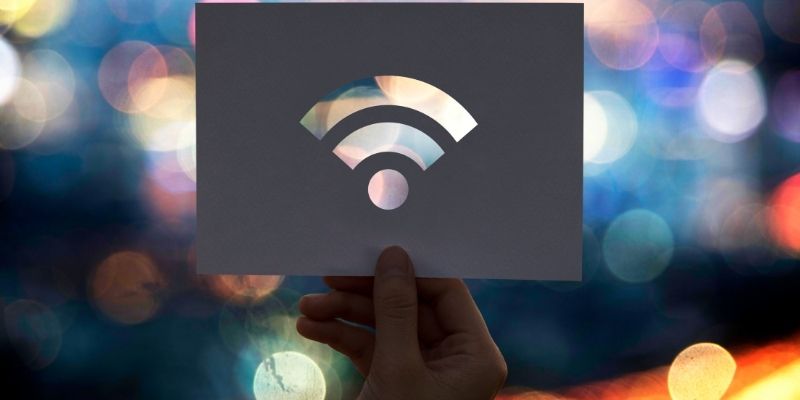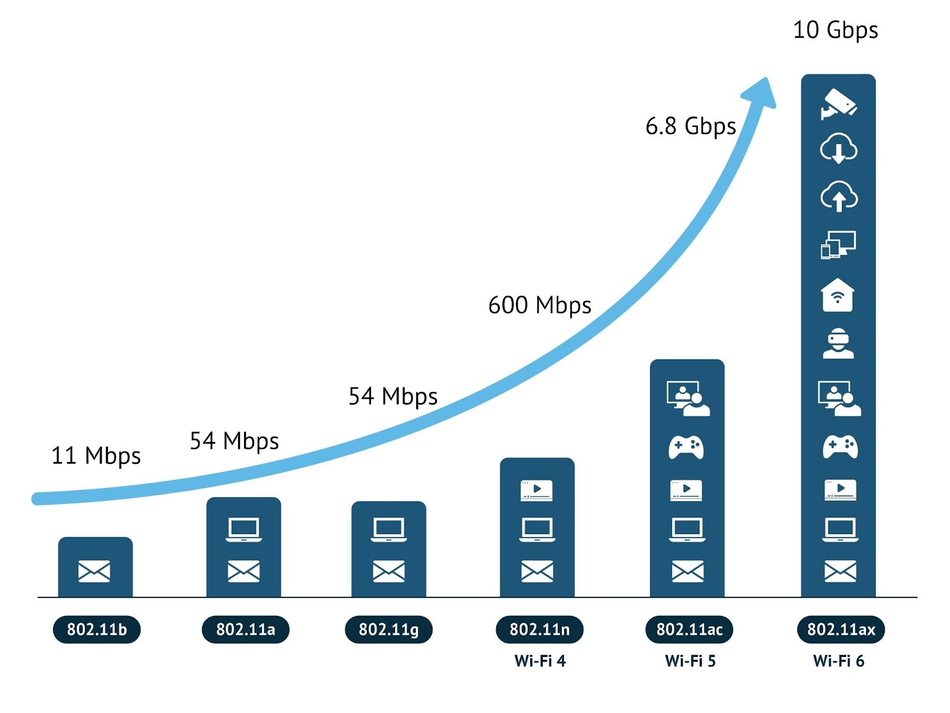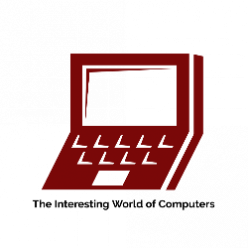There is no need to introduce the term “WiFi.” You are probably reading this article using the very technology we are discussing right now. Nonetheless, there may be additional information about this well-known wireless communication technology for you to acquire. You can use WiFi and search various topics from automated shutters in Utah to the net worth of Ariana Grande.
But don’t even think about it. because we have a number of interesting WiFi facts. In this post, we will also discuss each one separately.
This tutorial shall be easy as high school tutoring in Bettendorf!
Therefore, without further ado, let’s begin…
What is WiFi?
WiFi is a type of technology that can be used to wirelessly connect devices and access the internet. In specialized terms, WiFi is a group of remote organization conventions, which depends on the IEEE 802.11 norm. Nowadays, almost all smart devices have the ability to connect to wifi.
If you are a millennial you most likely don’t like newer sports and muscle cars like today’s generations. If you want to get cheap rent for a good car from the old times you can contact rent a car in Sarajevo.
Introduction of WiFi
The history of wifi technology is complicated. However, the current form of wifi technology was actually introduced almost 25 years ago on September 21, 1997. In 1992, a typical WLAN (Wireless Local Area Network) prototype test bed was created. Did you know that the company that offers google ads services in Toronto has the best WiFi possible implemented in their offices?

Australia’s CSIRO, a technology organization, developed this in 1992. The Radiophysics Division of CSIRO really fostered that proving ground. It is interesting to note that AT&T and NCR Corporation created the standards that would later become 802.11 at the same time. It occurred in the Netherlands in 1991.
After that, Vic Hayes and Bruce Touch approached the IEEE to establish a brand-new technology standard. In 1997, the IEEE 802.11 protocol was made available at that time. This was the beginning of Wifi. The protocol was later upgraded to the 802.11b version in 1999.
On wifi you can find various things, such as locations to travel to. It might be the last on your mind but Bosnia is one place to look at if you are planning to travel. People are very friendly, food is amazing. Even though it does not seem like the most exotic place to travel to, it is good to consider that it is a very cheap vacation and you can also rent a car at Tuzla Airport for small amounts of money!
WiFi and the ALOHAnet Project
At the University of Hawaii, wireless technology was developed in 1968. In a matter of seconds, they could search for paving companies in Chandler AZ.
Based on the recent searches they could also check wood floor waterproofing services in Seattle, and connect and be in touch with the rest of the world.
That technology was used to connect the Hawaiian Islands later in 1971. The ALOHAnet Project was the name of this technology. Additionally, the ALOHAnet project is thought to be the origin of the current wifi technology.
The Mother of WiFi
CE for pharmacy tech is an important aspect of maintaining knowledge and staying up-to-date in the field of pharmacy. Speaking of innovation, Hedy Lamarr, a well-known Hollywood actress, was not only an inventor but also the creator of “Signal Hopping.”
This invention is considered the foundation of all current wireless communication systems and earned her the nickname “The Mother of WiFi.” She achieved this during the Cold War, proving that her talents went far beyond acting.
The Father of WiFi
However, Vic Hayes was a major contributor to the development of the IEEE 802.11 protocol. He alongside Bruce Contact really authored the plan to legitimize wifi innovation.
Consequently, Vic Hayes is referred to as the “Father of WiFi.” Additionally, as a result of their contributions to this technology, Vic Hayes and Bruce Touch were both inducted into the WiFi NOW Hall of Fame.
Using your wifi you can also easily find appliance repair in Clermont FL if your home installations fail.
The WiFi Alliance
To put it simply, the “WiFi” trademark is owned by the WiFi Alliance, a non-profit organization. Manufacturers may use the WiFi Alliance’s trademark to brand products that have been certified for WiFi interoperability.
This is a great way to organize and control everything. According to the WiFi Alliance, more than 800 businesses use the WiFi trademark at the moment. Additionally, as of 2019, they reported that over 3 billion wifi-enabled devices are shipped annually worldwide, making it a vital tool for CNA CEU professionals.
Not only businesses but also households are using WiFi worldwide. It is a handy tool to solve almost all of your questions, even if you are interested in finding ribbons replacement for epson 8766 etc.
It is a modern book, even if you want to learn how to do gravel for sale Sammamish, you are a few clicks away.
The First Version of the WiFi
WiFi’s initial release date was September 21, 1997. It was first offered with a link speed of 2 Mbit/s. The WiFi speed increased to 11 Mbit/s later when the protocol was upgraded to 802.11b. So you can see that we have made considerable progress from that point forward.
Characteristics of WiFi
Data is actually transferred via radio waves with WiFi technology. As a result, it works best in a situation where there is a line of sight. Therefore, if you want the best wifi connection, there should not be any physical obstructions like walls, buildings, or other structures.

Additionally, some gadgets may impede your wifi signal. Interference can occur, for example, between cordless phones, cordless cameras, and microwave ovens. Also, this could be a problem if there are too many wireless routers or access points nearby.
Note that heavy rains can damage your home’s electric cables, which means it can lead to network failure. It should not present a problem if you at least do a quick and cheap fascia replacement to lead the rains away from crucial parts of your house.
Commercial Breakthrough of WiFi
WiFi was not actually commercially available to regular consumers after its initial release. However, at first, it was Steve Jobs who envisioned regular computing devices having wifi. Apple Inc. began using WiFi in their iBook laptop series in 1999.
In fact, this was the first product sold to the general public with WiFi connectivity. Later Apple really rebranded the innovation as an Air terminal. However, this was eventually discontinued. Numerous other manufacturers began gradually incorporating wifi technology into their products after Apple did so.
Different Names of ‘WiFi’
As of right now, the IEEE 802.11 protocol is known as wifi. However, this technology did not initially go by the name wifi. This technology had more than ten possible names. WaveLAN, Direct Sequence, WECA, DragonFly, FlankSpeed, and others are notable examples.
The Current Name ‘WiFi’
This technology was initially known as “IEEE 802.11b Direct Sequence.” But as you can see, it’s not very catchy and a little tricky. The WiFi Alliance, therefore, hired a brand consulting firm to come up with a fresh, catchy name for their new technology.
After that, they came up with ten names, and WiFi was chosen as the name. As early as August 1999, commercial use of the name WiFi began. Phil Belanger, a founding member of the WiFi Alliance, claims that the Interbrand brand consulting firm came up with the name WiFi.
The WiFi Alliance actually used a wifi-related advertising slogan for a brief time. “The Standard for Wireless Fidelity” was the slogan. It is still up for debate whether Wireless Fidelity is the full term for WiFi.
It is claimed by some that the term “Wireless Fidelity” was not used. However, others assert that Wireless Fidelity is also abbreviated as WiFi. Whatever the circumstance, we believe that WiFi was an excellent choice.
The WiFi Logo
Did you know that you can earn NAB CEUs by taking courses related to WiFi and other technology topics? Everyone is familiar with WiFi’s logo, which was actually designed by Interbrand, the same company that coined the name WiFi. The yin-yang-inspired logo certifies a product’s interoperability and is recognized worldwide. Consider taking a course on WiFi technology to earn NAB CEUs and stay up-to-date on the latest advancements in wireless communication while also becoming Nursing Home Administrator.
WiFi Generations
Technology for Wi-Fi has come a long way. There are approximately nine distinct generations of wifi technology at this time. The WiFi 0, 1, 2, and 3 were all without a brand. The WiFi 0 was the first generation to use the 802.11 IEEE standard, which was adopted in 1997. It could link at a maximum rate of 1 to 2 Mbit/s. It used a radio frequency of 2.4 GHz. Did you know that the owner of the fence company in St Augustine uses the best possible internet?
WiFi 1 and WiFi 2 were released in 1999. Their respective IEEE standards were 802.11b and 802.11a. The wifi 1 age had 1 to 11 Mbit/s linkrate. In contrast, the wifi 2 had a maximum link rate of 8 to 54 Mbit/s. Additionally, the WiFi 2 was the first model to utilize the 5 GHz radio frequency.
With the release of WiFi 4, in 2008, the WiFi Alliance actually began to name the various generations of WiFi technology. Additionally, this was the first generation of WiFi technology to be compatible with both 2.4 GHz and 5 GHz radio frequencies.

Then, at that point, after 6 years, they delivered WiFi 5 of every 2014 which had a maximum connection pace of 433 to 6933 Mbit/s. It used a radio frequency of 5 GHz. The most recent WiFi versions, WiFi 6 and WiFi 6E, were released in 2019 and 2020 with a maximum link rate of 600 to 9608 Mbit/s. 802.11ax is the current generation’s IEEE standard.
The first generation of the wifi 6E supports both the 2.4 and 5 GHz radio frequencies in addition to the 6 GHz radio frequency. The IEEE standard for the next WiFi 7 generation, 802.11be, is said to have a maximum link rate of 40,000 Mbit/s. However, we do not precisely know the release date.
The First Campus-Wide Wireless Internet Network
Nowadays, almost all of the world’s top universities have access to a wifi network. Students could learn about motorized window blinds in Colorado springs in a moment. Carnegie Mellon University, on the other hand, was the site of the first campus-wide wifi internet network.
The year was 1993. Even the branding for the wifi was not introduced at the time. The WiFi zone at Carnegie Mellon University was fully operational by 1997. Wireless Andrew was the project name.
City-wide WiFi Connection in India
Note that if this tutorial does not work out for and you do not find it helpful, you can contact the best explainer video company to explain you it for you more efficiently.
A number of successful attempts have been made to implement a wifi network throughout a city. This was accomplished by India in 2004 in the city of Mysore.
Apart from India, the US also has amazing WiFi internet across every state. If you go to the best auto service in Woodbridge, they have implemented the fastest WiFi in America there.
All of this project’s work was done by WiFiyNet, a local networking company. India has implemented citywide WiFi networks in several villages and cities in addition to that one. At the time it was unusual to have a service that fast. You could start planning your trips over the world and check RV academy online.

